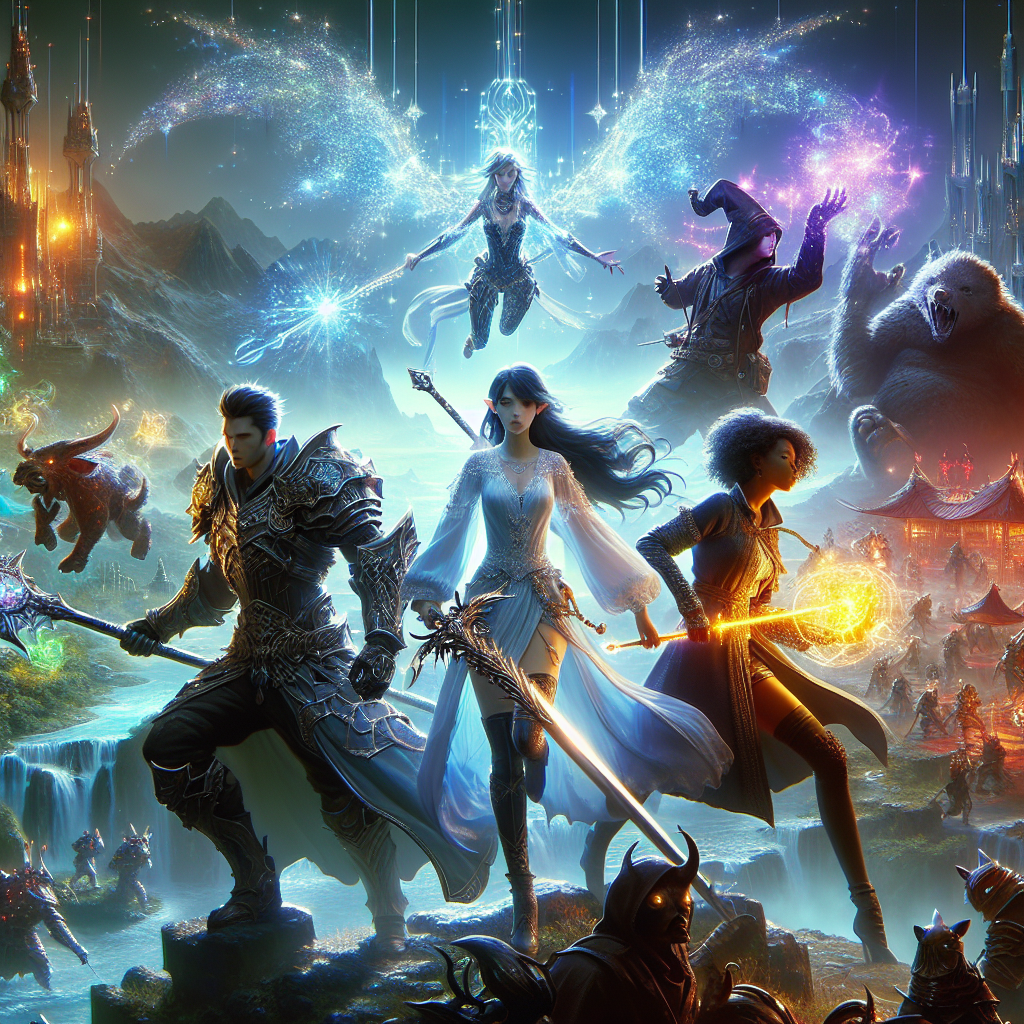Revitalized Enthusiasm for Role-Playing Games
My already rapacious hunger for RPGs has only grown more intense this year, even after being very well fed thanks to the recent summer of RPGs. I’m constantly snacking on TTRPGs, MMOs, CRPGs, sandboxy roleplaying adventures—my greed knows no bounds. And now here comes Lightforge Games, a studio founded by folks with CVs that include Blizzard, Epic, BioWare, and ZeniMax Online, with what I can only describe as a roleplaying feast.
(Image credit: Lightforge Games)
Lightforge Games’ Vision
Lightforge Games, a studio with a pedigree that boasts experience from industry giants like Blizzard, Epic, BioWare, and ZeniMax Online, aims to revolutionize RPGs by blending elements from a variety of beloved genres. Their ambitious project seeks to create a new way to play roleplaying games, drawing inspiration from the creative freedom found in titles like Minecraft and Roblox, and the narrative depth of tabletop RPGs.
- Minecraft – Sandbox creation
- Roblox – Community-driven platforms
- Tabletop RPGs – Collaborative storytelling
- CRPGs like Baldur’s Gate 3 – Rich narrative experiences
(Image credit: Lightforge Games)
A New Kind of RPG
This is not a game that’s easy to define, but at its heart it is a collaborative storytelling RPG. Imagine a tabletop game, with a GM and players, but they are all on an equal footing. They work together to create locations and quests and storylines, rather than the GM taking charge and setting up scenarios for players to react to. These locations can be created by the group or shared by other players, and augmented on the fly. And while Lightforge will give groups a narrative framework, the bulk of the storytelling will come from the players themselves, as they chat and debate and work through the adventure.
“Players are in full control of the story wherever it goes,” Schembari tells me. “So what we’re ultimately making is a videogame where what you’re saying and what you’re imagining is just as important as what you’re doing on the controller. And you can really take the story in any direction. The default way to play is that you get together with some friends and you build out a quest together. You use some prompts to basically Mad Lib together what a quest could be. You use the game tools to create the quest, the space of the quest itself, and then you play it out to see what happens.”
Game Mechanics and Creation Tools
The game’s mechanics are designed to empower players, with the guide role being akin to a GM but on the same level as other players. The accessible creation tools allow for real-time modifications to the game world, drawing comparisons to the ease of use found in The Sims. This approach to creation and editing ensures that storytelling and gameplay remain fluid and dynamic.
| Lightforge’s RPG | The Sims |
|---|---|
| Real-time world modification | Static world-building in edit mode |
| Collaborative creation during gameplay | Solo creation before gameplay |
Building and Sharing Adventures
Players in Lightforge’s RPG can build quests and scenes with remarkable ease, creating new locations on the fly or editing existing templates. The game’s ‘zero prep’ systems mean that players can easily hop into adventures without extensive preparation. The intention is for players to share their creations with the community, fostering a collaborative environment where everyone can contribute to the collective storytelling experience.
Roleplaying and Storytelling
The roleplaying aspect of the game is a core feature, incorporating elements like dice, cards, and improv comedy to enhance the storytelling experience. The game’s philosophy, dubbed the ‘on-ramp to roleplaying,’ is designed to facilitate collaborative storytelling and help players, regardless of their experience level, engage in the narrative. This system encourages continuous storytelling through actions and consequences, ensuring that the adventure always maintains its forward momentum.
Combat and Resolution
The game features a turn-based tactical combat system where the guide controls the foes, using them to weave a more engaging narrative. The approach to combat is story-driven, focusing less on technical challenge and more on how battles can further the plot. Unique to this system are ‘epic opportunities‘ or ‘crises,’ which can resolve conflicts in various ways, such as enemies fleeing or the party being captured, leading to new story arcs.
The Central Hub Town
The central hub town serves as a key location for players, acting as a social space, progression system, and a narrative framework for the game. Drawing comparisons to roguelike progression systems, the town evolves as players complete quests, contributing to its development and unlocking new features. This hub is integral to the game’s structure, providing a foundation for players to build their own unique stories.
In conclusion, Lightforge’s upcoming game holds the potential to offer a unique blend of collaborative storytelling and sandbox playfulness. Drawing inspiration from games like Fortnite, the game could feature a seasonal structure, providing main story beats and prompts that players can use to drive the narrative forward in their own creative ways. This approach promises a fresh and dynamic RPG experience that adapts to the choices and imaginations of its players.

